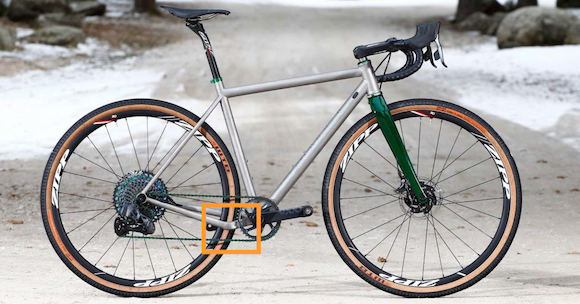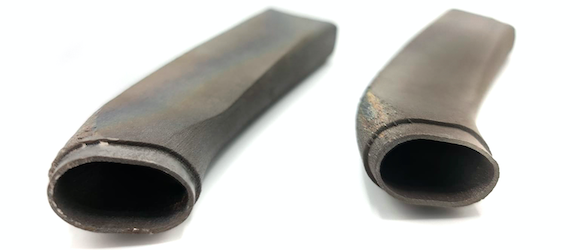Optimus3D uses Additive Manufacturing for bike component optimisation
November 26, 2021

Optimus3D, Vitoria-Gasteiz, Spain, was selected by bike parts manufacturer Angel Cycle Works to investigate the use of Additive Manufacturing as an alternative to hand welding in small-series parts production. In the project, the company used a single-laser Laser Beam Powder Bed Fusion (PBF-LB) RenAM 500S machine from Renishaw, Wotton-Under-Edge, Gloucestershire, UK.
Pablo Capellan, the Project Leader at Optimus 3D stated, “Our expertise in metal Additive Manufacturing is due in no small measure to our in-depth knowledge of manufacturing and reverse engineering. It means we can more readily adapt a client’s requirements to the 3D printing process, making full use of the complete spectrum of AM’s capabilities.”
“The challenge for Angel Cycle Works in manufacturing the titanium chainstay bracket component by hand fundamentally relates to the source metal itself – it simply isn’t the easiest of materials to work with. Particularly when hand-welding, deformations in the component’s integrity can occur, and staying perfectly true to a three-dimensional CAD model can be really very hard.”
Capellan continued, “That said, even when it comes to the alternative Additive Manufacturing process, whether it’s building a component by melting metal either in layers or by deposition along a path, titanium can still present challenges.”
This challenge led the company to select the RenAM 500S. This machine’s inert atmosphere is said to ensure a high-quality build environment for all qualified metals, including the necessary titanium Ti6AI4V powder.

Considering the component’s structure and dimensions, building in a vertical orientation was the obvious first choice – however, recognising the potential for deformation and the need to maximise productivity, Optimus3D chose to manufacture in the horizontal orientation. As expected, manufacturing the component horizontally direct from the CAD file yielded an unacceptable 0.375 mm distortion in the most vulnerable area. To remove this error, Optimus3D teamed up with Renishaw engineers to arrive at a solution based on finite element simulation.
Alex Garcia, Renishaw Application Engineer, explained, “Using third party Simufact Additive software, we were able to perfectly simulate the Powder Bed Fusion process of the RenAM 500S system. What this then enabled us to do was to determine a precise compensation factor that could be used to accurately pre-distort the component design.”
While counterintuitive, Optimus3D’s decision to additively manufacture components horizontally and employ simulation software to adjust the design for manufacture has seen worst case deformation reduced from a reported to 0.375 mm to 0.086 mm, well within the component’s 50 µm tolerance.
This solution also means that each build volume on the RenAM 500S machine is able to additively manufacture as many as fifty identical components at a reduced timeframe. By enabling the simultaneous yield of the maximum number components, the production met Angle Cycle Works’ target budget.
Using metal AM, Angel Cycle Works is said to be able to produce its titanium bicycle chainstay bracket to a high level of consistency, with improved weight and strength characteristics, and in quantities that are better able to meet customer demand.
















